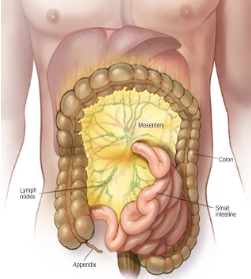Jejunoileum (the small intestine)
- kelsolson
- Feb 27, 2024
- 2 min read
The jejunoileum is often referred to as the small intestine, although in theory it is
the duodenum, jejunum, and ileum combined that make up the small intestine. In
visceral manipulation, we work with the duodenum separately-due to its different
structure and placement in the body.
The jejunoileum absorbs nutrients, water, and completes the chemical digestion of
carbohydrates, proteins, and fats. The entire tube is about 6.5 meters long and is
attached to the posterior abdominal wall by the mesentery. With this attachment,
the jejunoileum is designed to be an incredibly mobile structure. Any restriction
caused by fibrosis, adhesions, or intestinal spasms will create abnormal tension.
This abnormal tension with decrease the optimal motion of the small intestine, and
thereby compromise the rate of blood flow to this area.
Visceral Manipulation, and the duodenum:
Visceral Manipulation is a gentle, and supportive manual therapy. Working with
the ligaments, and tissues surrounding the organs. If you’re curious about the
therapy in general, click this link to read more:
When evaluating any of the viscera, we check for alterations in the proper
physiologic placement of the organ. We tune into the mobility & motility of the
organ, ensuring it has adequate space to utilize its full and proper axis of movement
on its own, as well as in relation to other viscera. If we tune into these movements,
and find that there are no discrepancies, that everything seems to be moving as it
should be-we simply move on to another area.
When working with the viscera, we do so with the thinking of “less is more”.
Working with each organ a maximum of 3 cycles of mobilization in each plane of
movement, so as not to overwhelm it. The beautiful thing about our bodies, is that
they are always working. The changes we support through these mobilizations will
continue to take place over hours, days, and weeks going forward as your bodies
continue to do the work.
Those who have been in a motor vehicle, or inertia-based trauma (whiplash, high
velocity impacts etc.) As our bodies have to brace our internal organs upon impact,
and as a result, may have developed areas of restriction. Those who have
undergone an abdominal or pelvic surgery, as this creates scar tissue, and a drying
out of the tissues making them less pliable, and more prone to adhesion. Pregnancy,
as our organs have to do a lot of rearranging in order to make space for a growing
baby.
Who can benefit from Visceral Manipulation of the Jejunoileum?
Those with inhibited spinal flexion. Those presenting with L side sciatica (venous
circulation problems). Joint pain of lower limbs, acute/chronic low back pain.
Those with Low energy, poor digestion, insomnia. Calcium deficiencies (deep
aching in bones). Improper vascularization in legs, itchy legs, and cold feet.
Sources:
VM1-Barral Institute
Visceral Manipulation: Jean-Perre Barral & Pierre Mercier
Physiological and Clinical Applications of Visceral Manipulation: Ron Mariotti








Comments